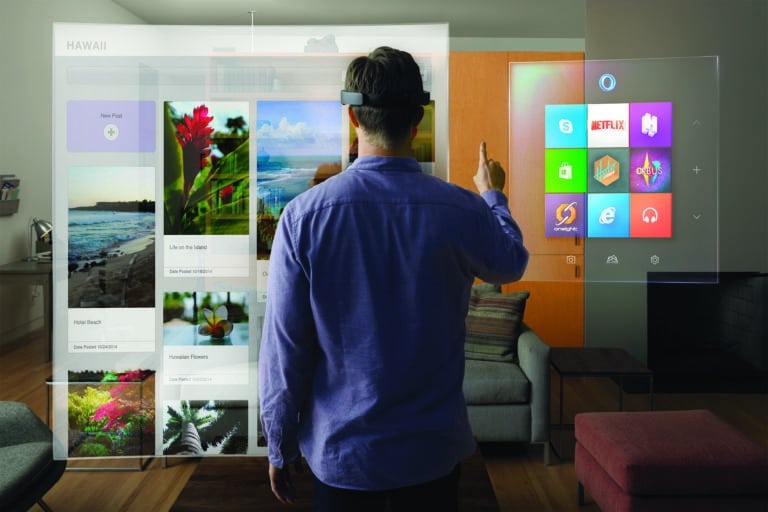
One of AR and VR’s criticisms is that they further isolate an already digitally-distracted culture (social media, etc.). The counter argument, at least for AR, is that it raises our gaze up from smartphones that are held down.
Apple CEO Tim Cook addressed this very point in this week’s earnings call, stating: “I see AR as being profound. I think AR has the ability to amplify human performance instead of isolating humans.” It’s telling about what’s driving the company that drives consumer tech.
The “heads up” concept is inherent in glasses-based AR, but what about the nearer-term reality of mobile AR? Even there, use cases compel more of an outward focus — holding a phone up instead of down — as the physical world plays a greater role in the content and UX.
“Millennials are statistically going to take 27,500 selfies,” said Meta’s John Werner at an AR in Action event last spring. “That says something about how they see the world. The next generation may be more Pokemon Go, using technology to look out as opposed to [in].”

Isolation Reversal
This is what ARtillry calls “isolation reversal” and has also been espoused by AR thought leaders like SuperVentures partner Ori Inbar. He sees this principle adding societal and altruistic value to AR. It can also be a driving factor in its innovation, he said at the same ARiA event.
“The reason I got into AR about a decade ago is I saw my kids constantly in front of a computer screen or mobile devices,” he said. “I felt I can’t change that, but maybe we can extract some of the things that attract them to those computers and to the internet, and bring it into the real world.”
Beyond altruism, this is an important concept in terms of app strategies and UX design. Given that AR’s interface happens through the smartphone camera, this means the use case requires holding the phone up. And that means UXs built around short sessions could resonate most.
“I can tell you from experience that people don’t do this,” Niantic CTO Phil Keslin said on stage at TechCrunch Disrupt last month. “It’s very unnatural. It makes them look like a total doofus if they’re doing it for an extended period of time.”

Snack Time
This goes back to our construct that VR is a meal, AR is a snack… so design user experiences accordingly. Glasses based AR could move more towards long-sessions, but mobile AR’s hardware realities will create specific use cases that require native thinking in app design.
Other hardware realities likewise compel experiences that live in short bursts. We’re talking battery life and heat issues from longer AR sessions If you’ve played with ARkit apps, you may have felt this first hand. Killing users’ batteries isn’t a good product strategy.
“In Pokémon Go, the only time they really use it is to share their encounter with the Pokémon,” said Keslin. “To take that one picture is natural….Everybody takes a picture, and then they’re done. It’s not walking around the world with the phone in front of their face.”
Snapchat and Pokemon Go are exemplars so far, given that most of the AR experience exists within a short window of media capture (e.g. selfie lens) That media is captured and shared asynchronously with other users — instead of truly collaborative AR — but it’s a first step.
The main point is that form factor should drive app UX, as we discussed with Lumis recently. This will continue to be a moving target as we learn about user behavior, but we’re seeing lessons already. And like with early smartphone app tactics, the playbook will evolve rapidly.
For a deeper dive on AR & VR insights, see ARtillry’s new intelligence subscription, and sign up for the free ARtillry Weekly newsletter.
Disclosure: ARtillry has no financial stake in the companies mentioned in this post, nor received payment for its production. Disclosure and ethics policy can be seen here.
Image credit: Microsoft
